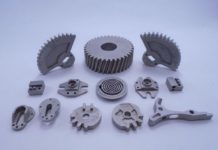
One of the aspects on which academic research and business are focusing, in the more general topic of efficiency, is lightweight construction, especially in the context of mobility, and the word “lightweight” is becoming of widespread use.
However, putting aside theoretical investigations, it would be enough to simply think about the physical aspect of professional marathon runners, or cross-country skiers, or cyclists, “climbers” in particular, who also have to overcome the effect of gravity, to understand, with examples from the biological kingdom, the importance of lightweight design where the aim is to reduce the energy costs of travels.
If, on the one hand, it is true that mobility will be more sustainable through the use of cleaner sources, through more efficient energy storage devices, drivelines able to reduce the dissipation underlying energy transformations and transmission; on the other hand, it will also be sustainable thanks to the reduction of the energy inherently necessary to achieve the desired result, proportional to the mass of the object to be moved.
Lightweight structural design, even before terrestrial mobility, has already been widely applied in other sectors, above all the aeronautical industry; it benefits not only from the refinement of the design and calculation methods, but also – and especially – from the choice of innovative materials and the use of the techniques for structural monitoring. Traditionally, in the aerospace industry, the security of lightweight structures is ensured by inspections at specific intervals but, since even new approaches to SHM (Structural Health Monitoring) are increasingly spreading in that field, all the more reason to think that this should apply if the cost of too frequent inspections would not be acceptable. One of the research lines of the lightweight design therefore concerns the integration of sensors in the structures and the development of platforms for automated analysis of their status.
Even transmissions, whose contribution to the efficiency of vehicles is already evident, both in direct reduction of losses and in terms of new layouts which make increasingly sophisticated energy management possible, are subject to these trends. The possible fronts for action concern the reduction of the number of components, the use of composite materials for some components, applications for sensors which, let us not forget, have had its beginnings right in the monitoring of rotating components and bearings.
At the level of the global systems, one does not have to exclude that in innovative architectures of vehicles, transmission can also perform structural functions, while further contributing to the use optimization of the materials for the achievement of the requested characteristics of stiffness and resistance.



